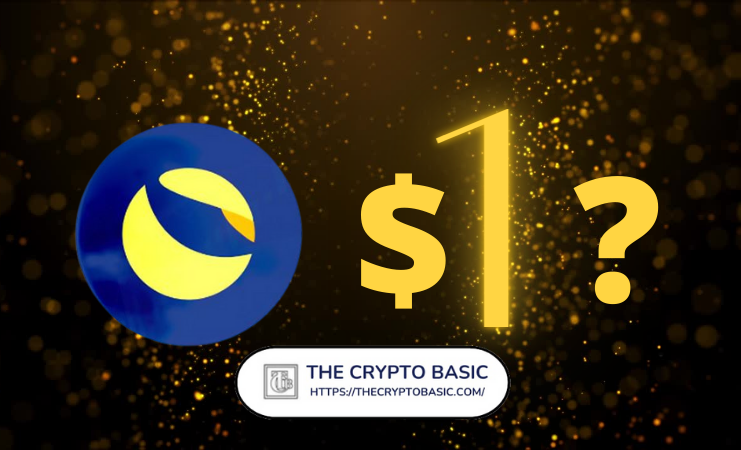The Terra Classic network is at an inflection point, and how the community navigates current problems could make or break it.
The Terra Classic network, at the peak of its development, was seen as the next frontier of blockchain development with a promise to provide decentralized money at scale for the decentralized finance market. Terra Luna Classic (LUNC) was trading for over $100 per token, and TerraClassicUSD (USTC) added billions in market cap.
However, it all came crashing down in May when USTC de-pegged. Now both are worth less than pennies. The community has since assumed control of the chain, and against all odds, they hope to chart a path to recovery. For many community members, LUNC reclaiming the $1 price point is not just a huge milestone but also significantly feasible. At least, that was the narrative fueled by influencers when the community took over the chain.
At press time, LUNC is trading at the $0.000188 price point, up 14.5% in the last 24 hours. At the current price, the token will have to see a 534,100% spike to clinch the $1 price point.
A Bullish Case For LUNC And Its Hurdles
It bears mentioning that such gains are not uncommon in the crypto markets. For example, in 2021, Shiba Inu gained a whopping 45,000,000% in a year in a meteoric rise fueled primarily by its vast social media following, exchange listings, and a decentralized exchange launch, all supported by a very bullish crypto market environment.
The meme coin did this with a supply of 1 quadrillion. In comparison, LUNC only has an over 6 trillion supply.
One can make a case that LUNC is in a better position with its strong social media following and developers that have clearly outlined a focus on utility. However, the road to such a meteoric price run is not without hurdles.
The question then becomes, how can LUNC attract more users?
The Contentions
For developers, the answer lies in real-world utility. For some users, the answer is increased burns that will attract new users on the promise of greater future value.
It bears mentioning that the latter runs the risk of turning LUNC into a meme coin. Even if it initially succeeds, once the bubble bursts like other meme coins before it, it will likely face a subsequent steep price drop. However, real-world use cases are likely to ensure the chain’s sustainability regardless of price.
Tobias Andersen, AKA Zaradar, a Terra Classic core developer and member of the independent development group Terra Rebels, recently argued that the fastest way to reduce the supply of LUNC is to incentivize economic activity on-chain, re-enable swaps and implement lower burn fees.
Rex Harrison, AKA Rexzy, of a separate developers group known as TerraCVita, argues that the community may have to do away with the burn tax parameter entirely, asserting that a flurry of decentralized apps running on the chain and competing for market advantage are likely to burn more than any tax. Rexzy supports his argument by highlighting that most LUNC burns are philanthropic to gain market advantage and not a result of the on-chain tax, which he believes discourages whales from carrying out transactions on-chain, discouraging app builders.
For context, Binance has burnt over 20 billion LUNC out of the total 35 billion LUNC burnt by the community. It represents over 57% of LUNC burns. In comparison, the on-chain tax has burnt only 10 billion LUNC, less than 30% of the total burns.
However, if recent proposals and agitations are anything to go by, the community looks set on maintaining the on-chain tax and increasing it again to 1.2%. It appears community members are losing patience with developers and the promise of utility even though it has only been a couple of months.
It is worth noting several LUNC and USTC holders lost fortunes in the ecosystem collapse. Consequently, it is unsurprising that they are impatient for results. However, as highlighted by David Goebelt, a network validator per a recent report, rebuilding takes time.
Meanwhile, relying solely on burns with the daily burn rate of about 367 million LUNC per TerRarity data, it could take over 50 years for the token to clinch the desired supply to achieve the $1 price point. Notably, this fails to factor in other market forces and assumes volume and market cap remain constant.
Meanwhile, a split vision of the correct path to recovery is just one of the community’s many problems. In addition, the Terra Classic community is also largely divided by differing developer groups and influencers. Furthermore, the network is yet to figure out a practical and sustainable way to fund development, and developers are unlikely to work for free forever.
The Terra Rebels have already voted to move to a paid working model from the v23 upgrade. Meanwhile, a proposal to mint more tokens from token burns to the community pool to fund development faces stiff resistance.
The Outlook
The network is at a critical point of development as it prepares to re-open Inter Blockchain Communication channels and attain technological parity with LUNAv2 with the v23 upgrade. Already, it is beginning to see an influx of DApps like the Terra Rebels Moonshot and the Terra Casino, which have all contributed to LUNC burns.
However, how they navigate their current challenges will greatly impact the possibility of a meteoric LUNC price surge.
Disclaimer: This content is informational and should not be considered financial advice. The views expressed in this article may include the author's personal opinions and do not reflect The Crypto Basic’s opinion. Readers are encouraged to do thorough research before making any investment decisions. The Crypto Basic is not responsible for any financial losses.
-Advertisement-


